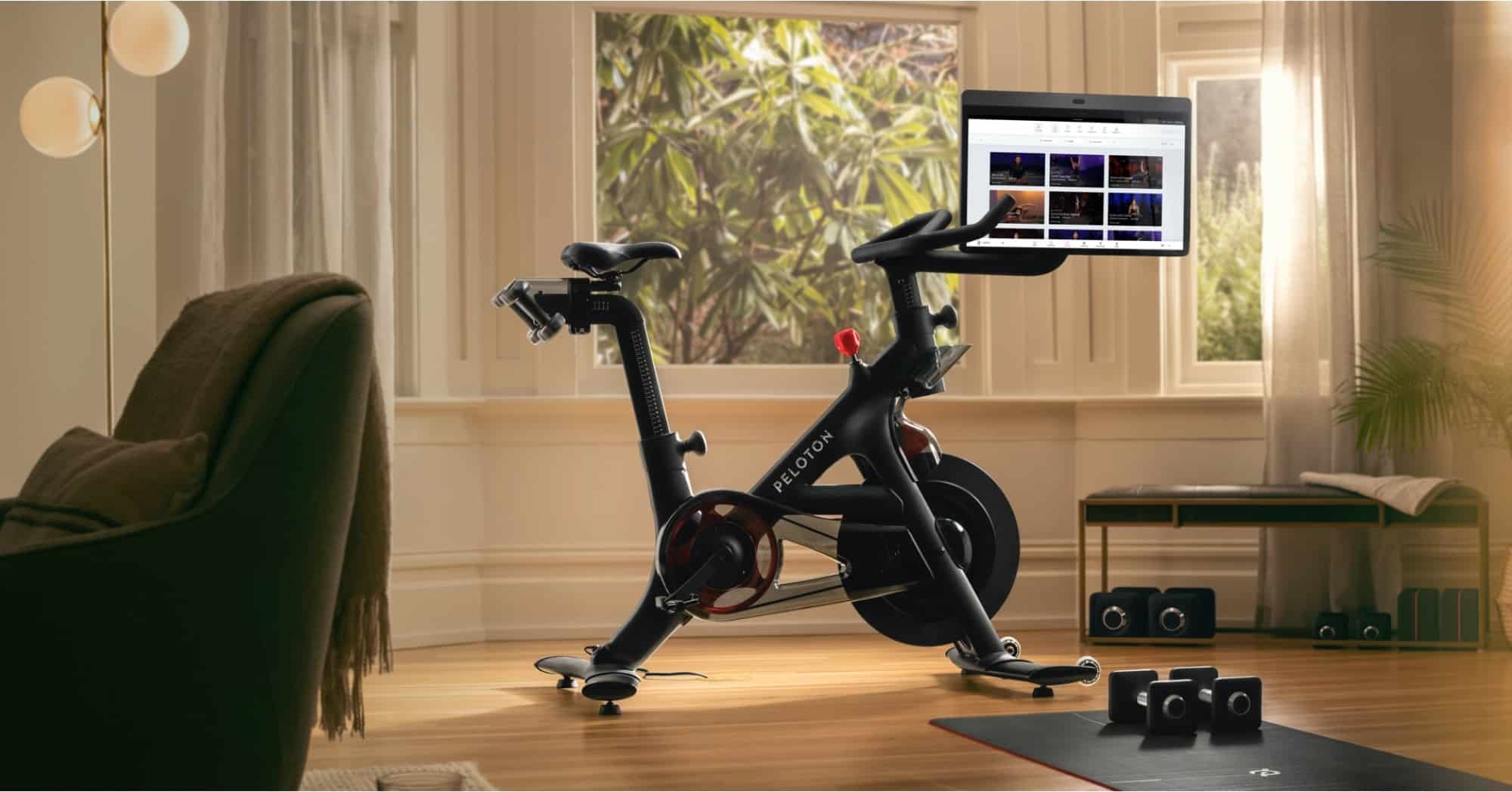Everyone wants to go to the gym to stay fit and look good. However, many people fail to join the gym due to work commitments and a shortage of time during the day.
To live a healthy life, it is important to pursue gym consistently. Many people believe a person can work out consistently only if he has gym equipment at home.
To solve this problem of gym freaks, Peloton started selling gym equipment and machines such as treadmills and stationary bicycles. People started buying gym equipment from Peloton to establish private gyms at home.
Today we will discuss how Peloton used this market gap for its benefit and made its place in the market. In this article, we will conduct a Peloton PESTLE Analysis to gain insight into Peloton. We will also examine what external factors impact the operations of Peloton.
Peloton is a renowned brand in the fitness industry. It was established in 2012 by five business partners. They envisioned providing fitness services at home. The establishment of Peloton revolutionized the fitness industry completely.
Two years after being established, Peloton launched its stationary bicycle. The bicycle became a massive hit as soon as it hit the market. The demand for Peloton's bicycles was skyrocketing.
The high demand for this product was its innovative features. The stationary bicycle had a touch-screen display through which customers could just sit at home and take bicycle tutorials.
After a few years, Peloton launched a high-end treadmill far ahead of all the other treadmills. The treadmill provided various options to users, which were new at that time, such as users could have interactive at-home workouts.
In the same year, the fitness brand started offering digital subscriptions for $39. The subscribers would get fitness content even if they didn't purchase fitness equipment from Peloton.
This made Peloton further famous among fitness freaks. In no time, the fitness brand received millions of subscriptions. An entire community of Peloton was formed.
In 2019, Peloton decided to go public. The money raised through its IPO was used for expansion in international markets. Soon Peloton expanded its operations in countries such as Germany, the UK, and Canada.
After the expansion, Peloton realized it had to increase its product portfolio. Peloton launched new products such as Peloton Bike+ and Peloton Tread+ to expand its product range.
Besides that, Peloton launched many accessories, such as workout mats. Other than that, the gym brand also launched Specs and Row machines.
The launch of these products diversified the product range of Peloton. As a result, the brand's customer base increased, and sales increased.
Besides the products, Peloton started offering a range of workouts, attracting more people to the brand. The brand continues applying innovation to its products, differentiating Peloton from other brands.
The brand grew significantly during COVID-19 when people weren't allowed to go to common gyms and were stuck in their homes for months due to lockdowns. That's when people felt the need to have a personal gym.
From there onwards, people started buying Peloton's workout equipment, and the sales of Peloton went skyrocketing. Currently, Peloton is one of the most significant brands in the fitness industry.
In 2022, Peloton's revenue was $3.58 billion. It has the potential to grow in the coming years. In 2022, it had a workforce of 5,404. Now that we have discussed Peloton's operations let's proceed further and discuss PESTLE analysis.
PEST analysis is a tool businesses use to highlight the external factors that impact different businesses. This PESTLE analysis will highlight what political, social, environmental, economic, technological, and legal factors impact Peloton. So let's proceed further and conduct Peloton's PESTLE analysis.

Political Factors That Affect Peloton
Political factors are the factors linked with the political condition of the country. Many political factors impact different businesses. In this section, we will analyze how different political factors impact Peloton.
Political stability in a country is important for any business to run smoothly. Similarly, Peloton requires political stability to earn maximum profits. Suppose Peloton is functioning in a country where this is less political stability.
In that case, Peloton might experience a decline in sales since people in politically unstable countries tend to save more and spend less on products that aren't considered necessities.
Other than that, incentives provided by the government to specific industries also impact businesses. For example, many governments provide subsidies or tax reliefs to industries with positive externalities.
Suppose any government provides tax incentives to businesses in the fitness industry. In that case, this will benefit Peloton since its profits would increase. Furthermore, Political relationships between countries also affect Peloton.
Since Peloton is a brand that has branches in different countries, the relationship of the US with these countries really impacts Peleton. Suppose the relationship between the US and one of the countries where Peloton has its branch deteriorates. In that case, Peloton might have to close down its stores in that country.
Economic Factors That Affect Peloton
Businesses are directly impacted by the economic conditions of the country where they operate. Let's look at how various economic factors impact the operations of Peloton.
One of the economic factors that impact Peloton is the inflation rate in an economy.
If a country is experiencing high inflation, the prices of commodities in that country will be generally high. As a result, the disposable income of consumers would fall.
In such a scenario, people won't have enough money to spend on fitness equipment. As a result, the demand for the products of Peloton will fall.
Moreover, businesses generally grow in the era of economic booms and shrink during recessions. Similarly, Peloton will also grow if the country is experiencing an economic boom. The reason for Peloton's growth would be consumers' high purchasing power.
Hence, if a country is experiencing an economic boom, Peloto will experience high sales and growth. On the contrary, if there is a recession, people won't have enough money to buy the fitness equipment Peloton offers.
Furthermore, interest rates generally impact the level of consumption in the economy. Suppose a country's central bank sets high interest. In that case, people limit their expenditures and save more because now they have the incentive to save.
On the other hand, If the interest rates are low, the consumption in an economy generally increases. Low-interest rates suit Peloton because of two reasons. One is that when the interest rate is low, the demand for Peloton's products will increase.
The second reason is that Peloton can take loans at low-interest rates to expand or solve its liquidity problems.

Social Factors That Affect Peloton
Social factors highlight the socio-cultural factors that impact the operations of any business. This section of the PESTLE analysis will examine the social factors that affect Peloton.
Businesses must analyze the trends that persist in a country before launching any product. If the product is in line with the existing trends, the masses will love it. If not? Then better luck next time.
Since Peleton is a fitness brand, the mindset of the masses regarding health and wellness impacts Peloton. If the masses want a healthy lifestyle and to be fit, then Peloton will easily penetrate the market.
However, suppose the general population is unaware of a healthy lifestyle. In that case, Peloton won't be able to sell enough of its products in such a society.
Moreover, the average age of society is another factor that affects Peloton. If the majority of the population in a society is above the age of 50, then in such societies, the demand for Peloton's equipment would be relatively low compared to a society where the majority of the population is in its youth.
Technological Factors That Affect Peloton
Technology has a great impact on businesses. Various technological factors affect the operations of businesses. In this section, we will analyze what technological factors impact Peloton.
Peloton is one of the brands that are famous for its innovation. Peloton relies heavily on technological innovations. These innovations provide an edge to the products of Peloton and make them diverse in the market.
Peloton used the latest touch-screen technology in its bicycles and treadmills, which made its products big hits. Currently, it is selling VR specs that are further attracting customers.
Moreover, Peloton is using e-commerce to sell its equipment through its online store. Using e-commerce, Peloton sells its products with the minimum operational costs.
Furthermore, as technological advancements are taking place, data analytics is proving vital. Peloton could also use data analytics to analyze its customers' data. By doing so, Peloton can extract valuable information from it.
For example, Peloton can find out its targeted audience. Moreover, it can analyze which of its products is best-selling and why. The use of data analytics help Peloton improve.
Legal Factors That Affect Peloton
Legal factors represent a country's laws and legal framework that impacts businesses. Different laws impact businesses differently. Let's examine how legal factors affect Peloton.
Consumer protection laws are essential for any business. Violation of these laws can result in fines and even bans. Peloton also has to abide by the consumer protection laws.
It must ensure that the company's equipment isn't harmful to consumers. Otherwise, the brand will face heavy penalties.
Moreover, Peloton also has to pay attention to the labor laws in its operating countries. In the case of strict labor laws, Peloton will have to pay the minimum wage set by the government to the employees and ensure no discrimination occurs with the workforce. Otherwise, the brand might have to face lawsuits.
Furthermore, Peloton has to ensure that its customer's data is protected. In case of data leakages or theft, the brand might face severe punishments because strict data protection laws ensure the safety of consumers' data.
Peloton also has to be careful while designing its products because If the design of Peloton's product matches the design of any other brand, then Peloton might have to face lawsuits. After all, the laws against intellectual theft are very strict.
Environmental Factors That Affect Peloton
Environmental factors are the factors that are related to the environment. Environmental factors affect businesses in many ways. Let's take a look at how different environmental factors affect Peloton.
As climatic change is occurring, the frequency of natural disasters is increasing. These natural disasters often cause traffic congestion and road blockages, impacting several businesses.
Similarly, Peloton delivers its equipment to buyers in different parts of the world. Natural disasters can cause delays in orders which can piss off customers. As a result, the reputation of Peloton would be damaged.
Other than that, natural disasters can also disrupt the internet supply. This can impact the operations of Peloton negatively since Peloton relies heavily on the Internet for orders and providing services to its customers.
Peloton also has to abide by environmental regulations during the process of manufacturing. In case of causing air pollution or dumping unprocessed waste, Peloton can face legal consequences.

Peloton PESTLE Analysis: Final Word
Peloton is one of the most popular fitness brands. It was established in 2012 with a vision to sell gym equipment to people so that they can work out in their homes.
After two years of its establishment, the brand launched its first product, a stationary bicycle. People were immediately attracted to the product because it was far ahead of its time. Later, Peloton launched other products such as treadmills, specs, and row machines.
Currently, Peloton generates revenue worth billions of dollars. Moreover, it has now spread its operations into multiple other countries.
After discussing the operations of Peloton, we conducted a PESTLE analysis of Peloton in this article. The PESTLE analysis framework helped us examine how various external factors impact Peloton.
To see how different internal and external factors impact the operations of Peleton, look at the SWOT analysis of Peloton. Moreover, If you are interested in learning how PESTLE analysis is conducted, take a look at more examples.










